目录
一.标准库中的string类
二.string的常用接口函数
2.1string类对象的构造
2.2 string的容量操作
2.3 string类的访问与遍历
2.4 string类对象的修改
2.5 string类常用的非成员函数
三、总结
一.标准库中的string类
可以简单理解成把string类理解为变长的字符数组,我们可以对它进行增删查改等一系列操作,同时有一些列封装的接口函数提供给我们可以让我们直接使用。
二.string的常用接口函数
2.1string类对象的构造

string s2("hello bit"); // 用C格式字符串构造string类对象s2cout << s2 << endl;cout << endl;string s3(s2); // 拷贝构造s3string s3(s2); // 拷贝构造s3cout << s3 << endl;我们普便使用以上的两种方法来构造string。

2.2 string的容量操作
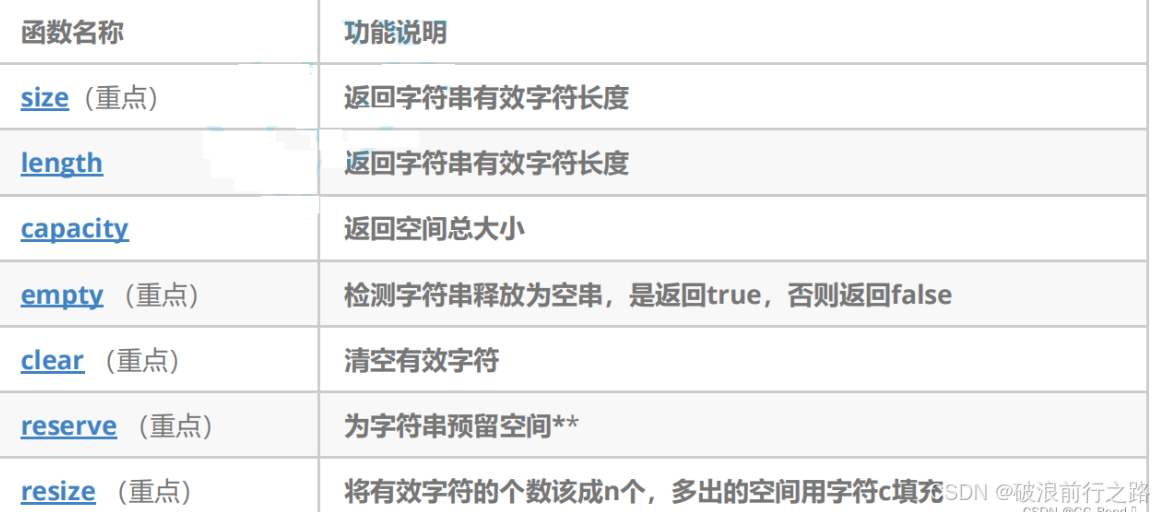
int main(){string s1("abcdef");cout << "s1:" << s1 << endl;cout << "size:" << s1.size() << endl; //有效字符的个数cout << "length:" << s1.length() << endl; //有效字符的个数//上面这两个功能上差别不大,一般我们用size()用的多一点cout << "capacity:" << s1.capacity() << endl;//开辟的空间大小(当空间不够时会自动扩容,扩容空间为原空间的1.5倍(与环境有关))cout << "empty:" << s1.empty() << endl; //检查字符串是否为空,0表示非空,1表示空s1.clear(); //清空字符串cout << "s1:" << s1 << endl;s1.reserve(50); //开辟指定大小空间(一般会多一点)cout << "capacity:" << s1.capacity() << endl;s1.resize(5, 'a');cout << "size:" << s1.size() << endl;cout << "s1:" << s1 << endl;return 0;} 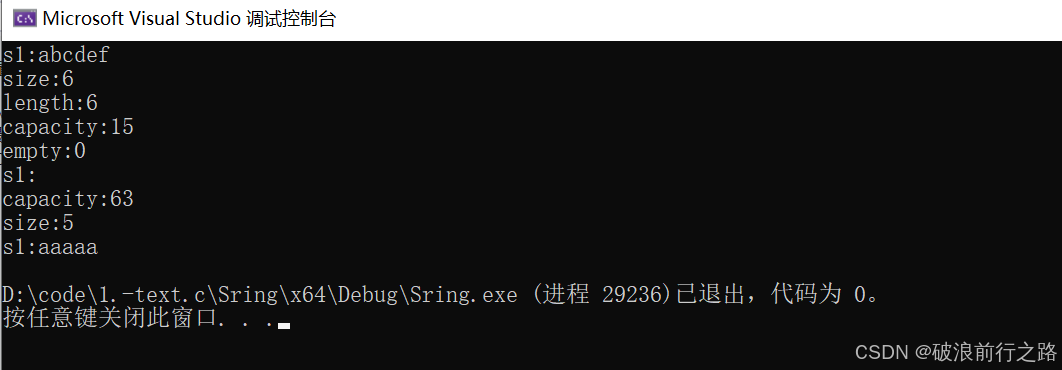
2.3 string类的访问与遍历
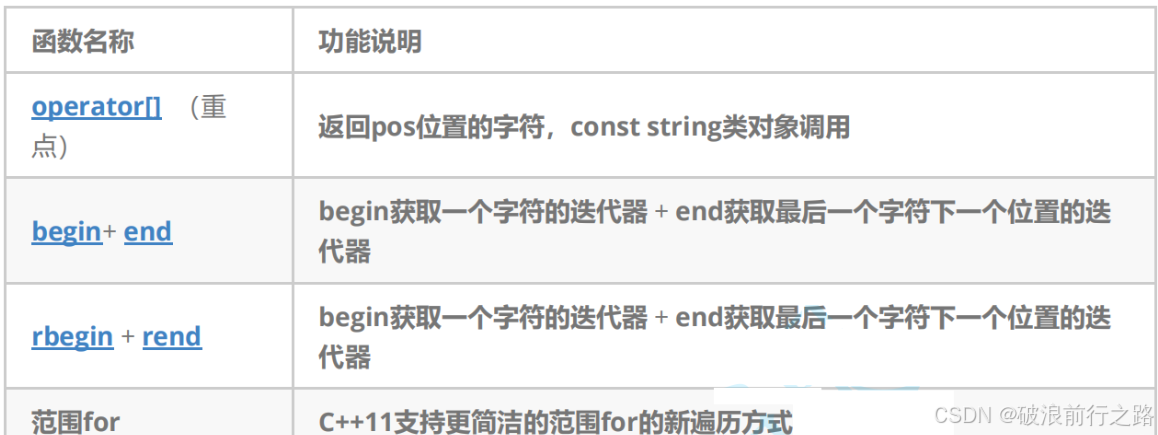
int main(){string s1("abcdef"); //访问方法:下标访问法cout << s1[1] << endl;cout << s1[2] << endl;s1[0] = 'h';cout << "下标遍历法:";for (int i = 0; i < s1.size(); i++){cout << s1[i] << " ";}cout << endl; cout << "迭代器法(正向):";string::iterator it = s1.begin();for (; it != s1.end(); it++){cout << *it << " ";}cout << endl; cout << "迭代器(反向):";string::reverse_iterator rit = s1.rbegin();while (rit != s1.rend()){cout << *rit << " ";rit++;}cout << endl; cout << "范围for法:";for (auto e : s1){cout << e << " ";}cout << endl; return 0;} 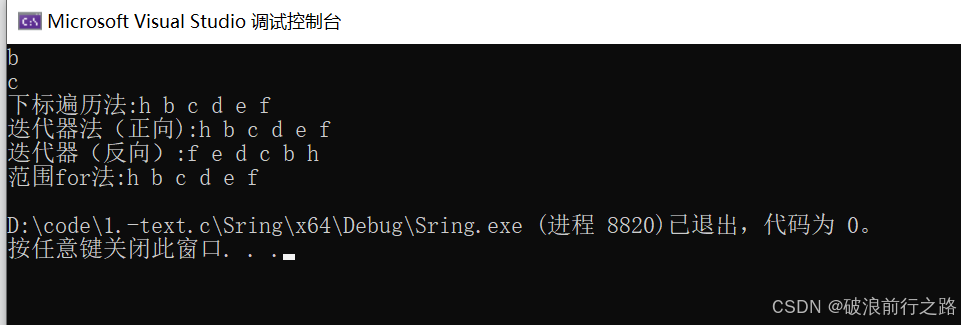
2.4 string类对象的修改
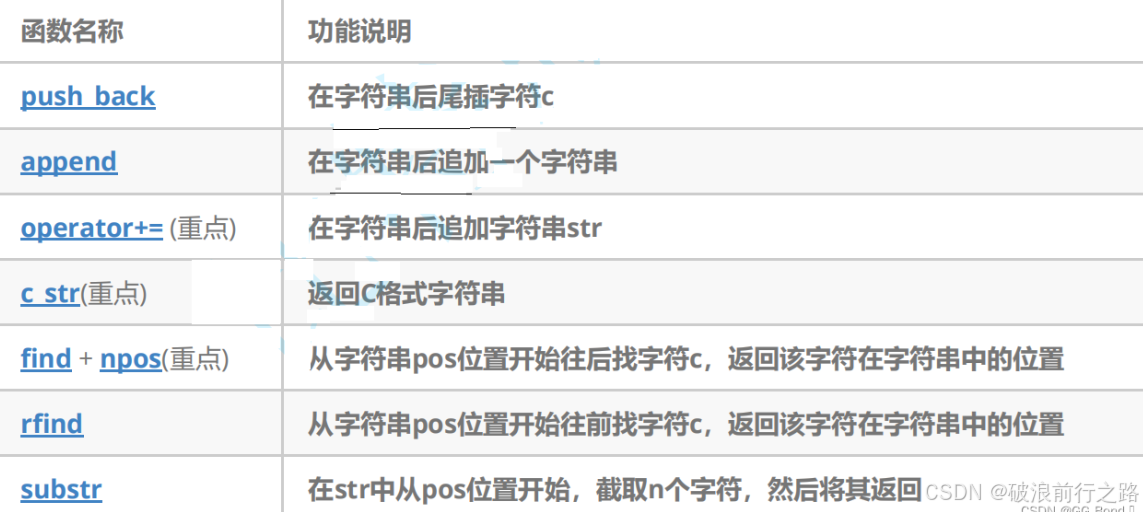
int main(){string s1("sssssssss");cout << s1 << endl; //push_back 在末尾加入字符cout << "push_back后:";s1.push_back('w');cout << s1 << endl; //append 在末端加入字符串cout << "append后:" ;s1.append(" www");cout << s1 << endl; //operator+= 在末端随意添加cout << "+=后:";s1 += " yy";cout << s1 << endl; //c_str 返回C格式字符串cout << "c_str:";const char* m = s1.c_str();cout << m << endl; //find 从pos位置开始查找字符并返回其位置cout << "find:";int npos1 = s1.find('y');cout << npos1 << endl; //rfind 从pos位置开始往前查找字符并返回其位置cout << "rfind:";int npos2 = s1.rfind('y');cout << npos2 << endl; //substr 从pos位置开始截取n个字符并返回cout << "substr后:";string tmp = s1.substr(npos1, npos2 - npos1);cout << tmp << endl; return 0;} 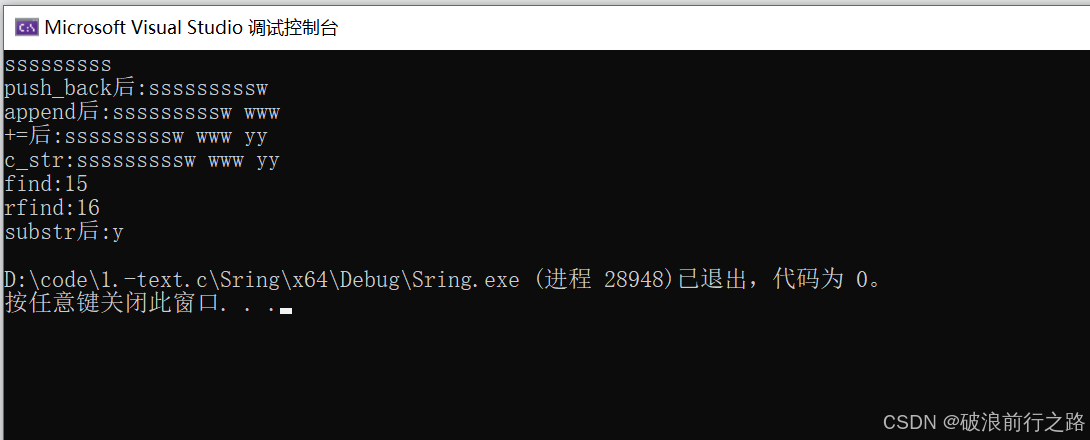
2.5 string类常用的非成员函数

int main(){string s1("hello ");string s2("bit"); //operator+ 涉及深层拷贝,不建议多用cout << "operator+后:";cout << operator+(s1, s2) << endl; //operator>> 输入运算符重载cout << "operator>>:";string s3;operator>>(cin,s3);cout << s3 << endl; //operator<< 输出运算符重载cout << "operator<<:";operator<<(cout, s1) << endl; return 0;} 
三、总结
以上就是常见的string封装的接口函数,下期将讲解关于如何实现这些函数。
请大佬们一键三连~